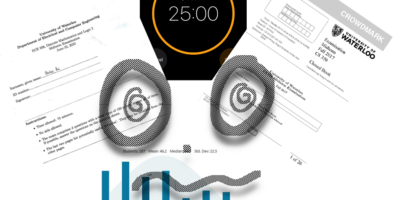Alright, I know that this argument is pretty much the epitome of a #FirstWorldProblem, but it’s one that is actually rather serious in the issues it represents for our first-world society. Receipts are something we’ve come to expect and don’t even think about as we are handed them at the checkout, only to throw them into the nearest waste bin, or to stuff them into our pockets and dump them on our desk at home to be thrown out (eventually) instead. Maybe you are one of those odd people who actually keeps track of your funds from receipts in a colour-coded excel spreadsheet separated by month and type of expense, and while that’s quite… fun… you are certainly a rare creature in today’s day and age. I keep track of my expenses online as, apart from the tuition’s worth of cash I give to the C&D over the course of a term, I pay for everything with either credit or debit.
PCP-Con
Note: This article is hosted here for archival purposes only. It does not necessarily represent the values of the Iron Warrior or Waterloo Engineering Society in the present day.
Paper receipts are nothing but sad morsels of trees that I am forced to send to their doom in a landfill (since there never seems to be any recycling containers handy, but that’s a rant for another day). They are relics of an age in which goods or services were exchanged for hard cash, which created the dilemma of having no proof of purchasing said goods or services, which reduced to discrepancies one person’s word against the other. But with cash quickly becoming a dying breed of payment, receipts are also very rapidly losing their relevancy in today’s society.
The modern-day receipt appears to have two main purposes for the holder. Firstly, it is a way to keep track of purchases and money spent for budgeting, especially for those who are paying in cash and would be required to otherwise memorize the purchase for later use. Secondly, receipts act as a proof of purchase for, again, mainly cash purchases, and this is required for returns or refunds when desired. But in our age, the 21st Century, is the paper receipt really the ideal answer? Is it even a logical answer anymore?
Keeping track of purchases, aside from those made in cash, can be easily managed through online banking and other electronic bookkeeping methods. The fact that paying with debit or credit sometimes even produces two receipts (one from the store’s point-of-sale system, and one from the debit or credit machine if it is not integrated into said point-of-sale system) is absurd; neither of the receipts tell me anything that I couldn’t have simply viewed online with my banking services.
In a similar vein, having a paper document as the dedicated proof of purchase for any good or service is similarly archaic. It makes as much sense as having your online browsing history archived in printed documents, sorted into file folders; while it gets the job done, it is a system that becomes easily disorganized, with records misplaced or even accidentally destroyed, leaving no records of anything having existed at all. It would not be a difficult project to develop an online service (preferably separate from online banking services just to allow for two separate records, as well as separate from any given retailer) that would serve as an online archive of goods and services purchased — not only would it eliminate the need for frustratingly easy to misplace scraps of paper, it would make filing taxes far simpler.
While cash purchases do not have this same advantage of online records, there is also the fact that the majority of cash purchases are small in size, as regularly carrying a large amount of cash on-hand is not highly recommended. Unless an individual is very particular about maintaining a record of all purchases, regardless of size, the vast majority of these purchases likely do not even warrant a receipt, and should only be given if the customer demands one.
If tomorrow magically began totally receipt-less and we were required to come up with a way to track and prove purchases were made, I cannot imagine the proposed solution of paper receipts printed for every customer going over well. Immediately, someone would point out the large associated cost with the plan— not only for the obvious constant need for the resupply of paper and ink, but for the cost in producing and selling small-scale printers that would produce receipts only a few inches wide. The fact that the proposed solution would require retailers to initially purchase hardware and then have an maintenance cost for the entire time it is in use would not be appealing for any company.
A statistic from 2013 claims that every year, the United States alone consumed 250 million gallons of oil, 10 million trees, and 1 billion (yes, billion) gallons of water solely for the production of receipts— which then resulted in approximately 1.5 billion (that is again billion) pounds of receipt waste. Each receipt alone may seem infinitesimal in cost, but over the course of a single fiscal year each company invests a considerable amount of money and precious natural resources into these relics of a different age. Doing away with receipts almost seems like free profit.
Unfortunately, time has proven that society will almost always prefer the status quo, with much-needed changes to ourmodus operandi only coming slowly and painfully, if at all. But it is a change that I do not think should be neglected. It’s time that paper receipts find their way into our history books, not our pockets.




Leave a Reply